PR for Growth Strategy
You might be asking yourself – can I manage my company’s PR, or do I need to outsource to an agency?
Before you even ask that, you might find yourself wondering, ‘what even is PR’?
In this comprehensive guide, we’re going to put all those questions to bed.
We’ll take you step-by-step through things like:
- What PR is
- What it looks like
- How to manage and measure it
- What good and bad PR looks like
- What you should expect from an agency
We’ll also be talking about a crucial marketing factor that goes hand-in-hand with PR and growth; namely, content.
Before that, though, let’s start simple and define some key terms that we’ll be using throughout.

What Is Public Relations (PR)?
A quick Google search defines public relations (PR) as:
‘The professional maintenance of a favourable public image.’
This maintenance can be done by you, by a PR executive in-house, or a third party agency.
Who Is A Journalist?
Let’s have a look at what Google has to say about the term ‘journalist’:
‘A person who writes for newspapers, magazines, or news websites. Or, someone who prepares news to be broadcast.’
At first, the definition may seem simple. But with the rise of social and digital media, we think it needs interrogating.
Who are journalists?
What is a publication?
They’re fair questions. And without answering them, you’ll hamstring your PR journey before you even get started.
True, most journalists are those who write for well-known publications. These could be popular newspapers and magazines.
But what about online blogs and sites that don’t have physical print media?
Just because TechCrunch doesn’t have a physical magazine, it doesn’t mean they aren’t a newsworthy site.
And journalists don’t have to write for a print medium either. These days industry news can break on blogs even before it hits the papers!

When contacting the websites/business that host the article, though, there are things to bear in mind. For example, you might get more traction pitching to the editor rather than the author themselves.
Once you update your understanding of these terms, you’ll find that there’s no end of places to pitch.
21st PR doesn’t have to just rely on getting your company featured the morning in the morning paper anymore.
What Is A Pitch?
So, what is this ‘pitch’ thing that we’ve mentioned?
We’ll go into more detail later on in this guide about different types of pitches.
For now, let’s just define a pitch as something like:
‘Reaching out to a reporter or journalist with a story.’
The idea of a ‘story’ here is fundamental. There’s no point just throwing information at people – you have to craft a narrative.
We’ll explain what makes a good and a bad pitch soon. For the moment, just know that a pitch should:
- Be narrative – As we said, you should be telling a story.
- Be speculative – You should offer something and not assume that it’s going to be accepted.
- Have a hook – It needs to be attention-grabbing.
That’s just the start; there’s so much more that you can include to make your PR pitch awesome.
But we’ll work with that definition for now.

Influencers
Just a moment ago, we told you that who we classify as ‘journalists’ has changed pretty dramatically.
The rise in social and digital media has also brought about a new category of people who can be useful to pitch to. Namely influencers.
Ok, that’s a bit of a white lie; influencers aren’t really anything new.
We’ve had influencers in the form of celebrities for ages. What is new, however, is how we categorise them in the digital age.
We can think of influencers as being broken down into four distinct categories.
Mega Influencers
These are your celebrities.
People with global reach and characteristics like:
- Social media verification
- 1million+ followers
- Constant media presence
If you could, say, get a mega influencer to endorse your product, then you’d be laughing all the way to the bank.
However, to broker that sort of deal in the first place, you might end up breaking the bank.
Just consider that Kylie Jenner gets paid $1.2million per sponsored Instagram post.
So mega influencers aren’t the sort of avenue that startups or SMEs are likely to pitch to.
Macro Influencers
Macro influencers are one step down from this.
As we move down the list, note the correlation between followers and engagement.
A massive celebrity, like ‘The Rock’, might have an enormous following. But there will be people that don’t check his social posts every day.
In contrast, macro-influencers tend to be a bit more niche. They usually have social followings of around 100,000 to 1million.
This means that they usually have a dedicated following but still great exposure.
They’re an excellent halfway-house between micro and mega influencers.

Micro-Influencers
A micro influencer’s following will be smaller again. It’ll usually be around 10,000 to 100,000.
But as we mentioned, they may well have higher engagement. Plus, they might just about be recognised on a global scale.
Nano Influencers
In contrast, nano influencers are local. They also usually have little to no brand experience.
Obviously, this can be a positive for you if you catch them before their tipping point.
Nano influencers also tend to have small but dedicated audiences.
The point of these definitions is to show that you don’t only have to pitch to print journalists or even blogs.
Depending on your strategy, you might find it better to contact influencers in your niche.
You could approach them with content, exclusives, or even products for review.
Plus, contacting influencers can be a great way to build future relationships.
And don’t worry, we’ll talk more in a minute about what ‘exclusives’ are.
Now that we have our terminology down, let’s have a look at what PR relates to in the real world.
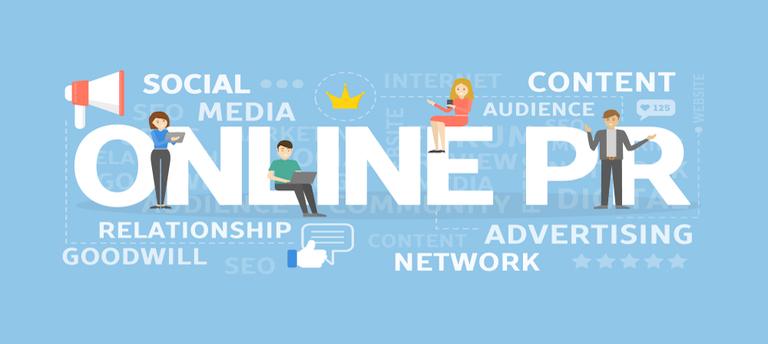
PR Mention
Types Of PR
PR is often thought of, reductively, as ‘press’. But this is a bit of a vague term.
In reality, PR channels relate to any 3rd party media, such as:
- News Media – TV, radio, and podcast appearances, speaking engagements, spokesperson gigs.
- Social Media – Social network engagement, online review gathering, influencer marketing.
- Web Media – Content for your website or blog.
However, PR also relates to:
- Community relations
- Employee relations
- Investor relations
For startups and businesses, especially, this last point is critical.
You’ll be managing your investor relations just as much as your community ones.
We often think of PR in terms of ‘good press’ for celebrities and public figures.
That’s why it’s important to have a face for your company – a customer-facing or business-facing person who people can relate to.

Think about why fashion designer ‘Off-White’ is synonymous with their CEO Virgil Abloh.
Then, think about when a company becomes enormous. Why do we tend to associate more with the brand itself than the face of the business?
For example, think about Coca Cola. Do you know who their director is? Because I sure don’t. But I do know that it’s officially Christmas as soon as the Coca Cola advert comes on.
It’s important to ensure good PR for both your brand and your brand’s figurehead.
Now (like we promised earlier), let’s have a look at some examples of types of pitches.

Types Of Pitches
We’ll be using the word ‘pitch’ a lot throughout this guide. As we’ve already defined what it means, let’s expand on the types:
- A guest article pitch – Where you offer to write something for a publication.
- Breaking news – Either for your company or in your niche.
- How ‘X’ will help ‘Y’ – We’ll have a look at this later in an email template. For now, let’s think of it as how a development in your niche will help a common problem.
- Product review – Where you ask an influencer to review your product.
- Sector overview – Where you offer your expertise as a leading authority.
What’s important to note from that list is that public relations and pitches focus on more than just news!
This will be important to remember when we start looking at content and keeping your brand in the public eye.
For now, let’s have a look at where successful pitches from that list could lead to:
- A guest post – On a third party site.
- Commentary – On the state of your industry.
- An appearance – Either on a podcast or broadcast media.
- A profile – On you as your company’s figurehead.
- An interview – Either print, digital, or broadcast media.
- A product review – Posted on a third party site.
All of which can have a positive impact on your current (and potential) users’ view of you and your company.
So how do we get started to reaping those benefits?
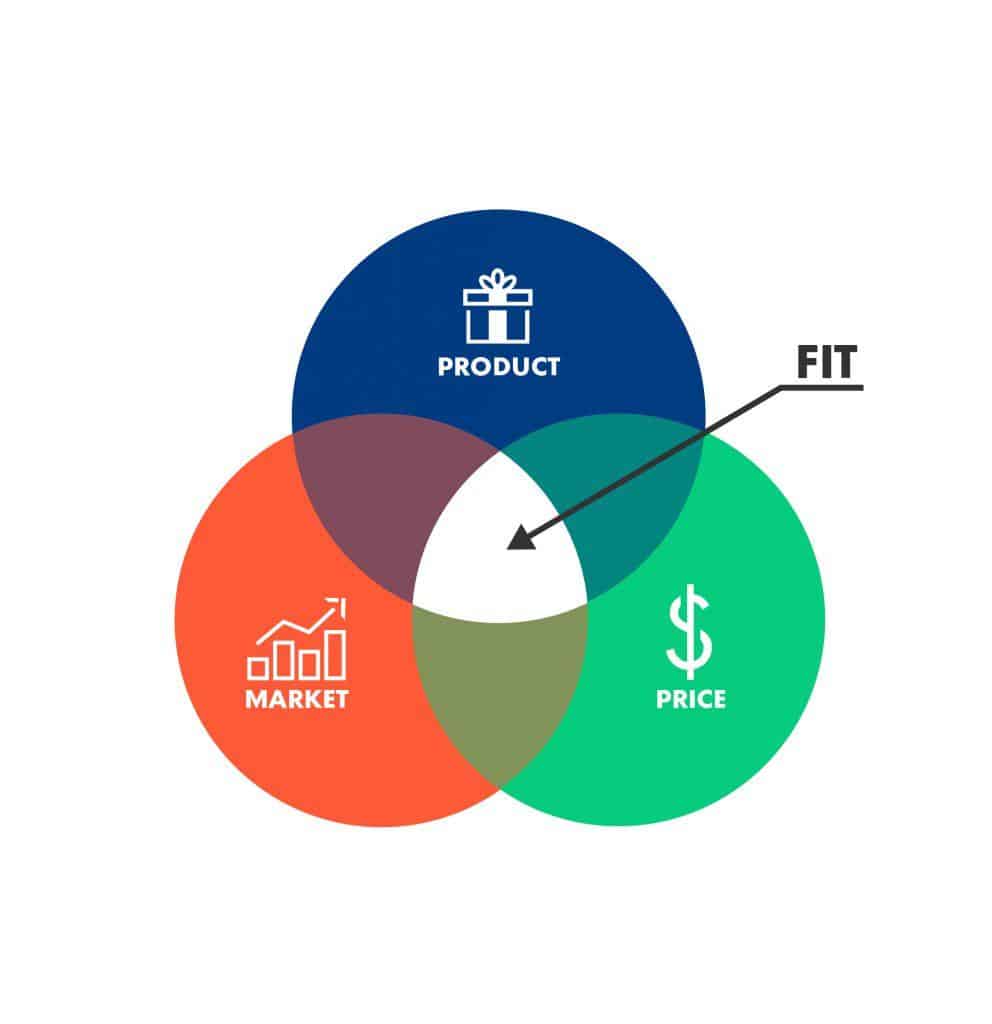
PR – Where To Start
Well, start by focusing on the right things.
Do you have a product or service that people want? If so, start by talking to users to understand user experience (UX).
There’s no point funnelling time and money in public relations if you don’t have a good product-market fit. This is where you have something that your market wants.
Ultimately, well-executed PR can do wonders for your brand presence. However, press is not necessarily a scalable form of user acquisition.
This means that you can’t rely solely on PR for long-term growth. But it does need to be integrated into your growth plan.
For now, let’s have a look at what those types of PR look like.
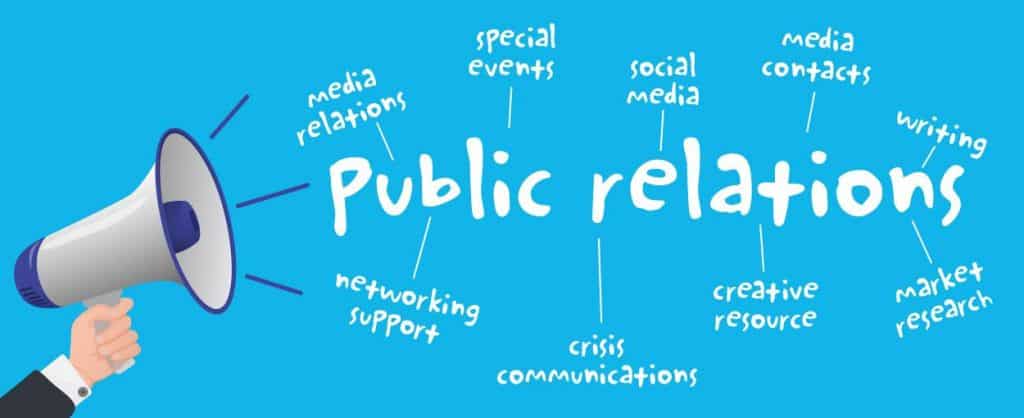
What Does PR Look Like?
PR is one of the best channels that businesses have to grow their social currency.
Social currency is your influence in social networks, online, and offline communities. It’s the degree by which others share your business. It also refers to how you fit into your consumers’ lives.
It’s basically how people perceive you and how good you look.
We typically break down where this currency can be gained into three areas or types:
- Earned media – Is placements and mentions gained through non-paid promotion. This is where reporters and journalists influence over what ‘makes the cut’.
- Paid media – Are things like ads where you’ve paid money to be promoted.
- Owned media – Is everything from blogs to social media and your company website. This is where you decide what ‘makes the cut’.
Below is a useful table outlining these three types and their definitions.
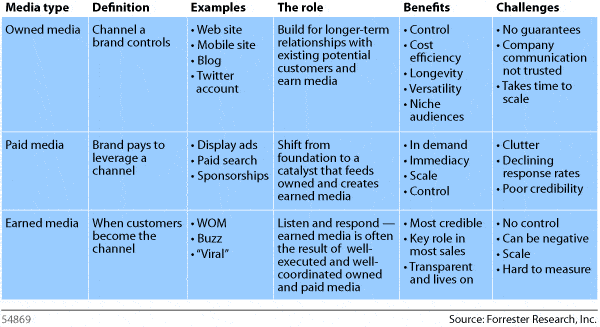
Traditionally, PR used to just focus on earned media. But, with the rise of social and digital media, companies are diversifying their efforts.
A new approach to public relations (instead of just sending out hundreds of press releases and seeing what sticks) might look like:
Publicity: Securing coverage in the news — be it print, broadcast, or online.
Crisis management: Staying ahead of, and responding to, news stories and their potentially negative fallout.
Event management: Brainstorming, creating, and managing events.
Speaking opportunities: Finding and pitching for speaker appearances, or podcasts, for example.
Awards: Attempting to win (and then show off!) reputable and relevant awards.
Press releases: Information on a company announcement that serves a purpose beyond just media relations.
Media pitches: A less formal suggestion or ‘story’ that doesn’t rely on a company announcement.
What we find ourselves coming back to time and time again is the relationship between content and PR.
If you want to start owning your media, you need to invest in things like a personal blog. But that alone isn’t going to get the world to know about you.
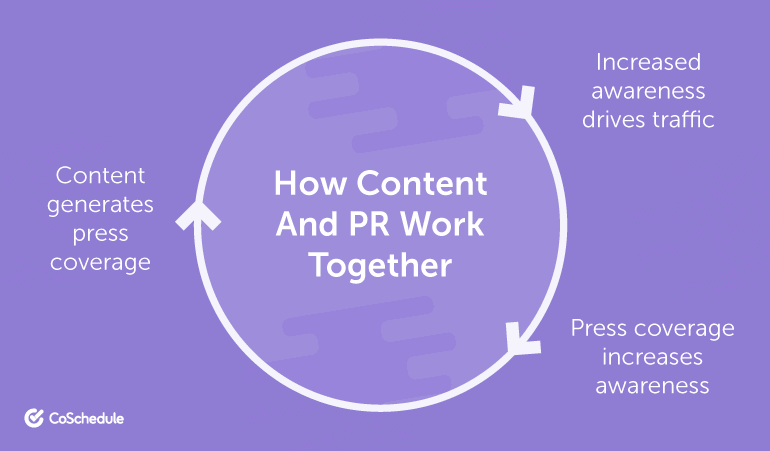
With:
- Good content.
- A clearly defined brand.
- And a public-facing figure.
Your public relations can start to tell a story that doesn’t have to be event-based.
This means that your public relations efforts don’t have to rely on new updates or product launches.
Then your PR team can shout about your product or service from the rooftops whenever!
PR Terminology – Content
Which brings us to the point that we’ve been circling around in the guide so far. Namely, the lifeblood of PR – content!
We can define content as literally everything that you produce. This includes everything from memes to white papers.
With this in mind, you need to start thinking about content as a product. You’ll want to ask your company questions like:
- When to start producing content? Is it too early if you don’t have a good product-market fit?
- Why start? What are you offering your users?
- Do you have time to do it yourself? Or do you need to think about outsourcing your content creation?
Then you can start thinking about content marketing.
‘Journalists are looking for more than just press releases and data these days. They need content.’
Jane Hunt, The Content Agency

Content Marketing
While content marketing and PR are technically exclusive; they share a lot of principles.
Public relations is about managing relationships with an existing audience in general.
Whereas, content marketing is a strategy to put out valuable, relevant, and consistent content into the world.
With this, you can attract and retain a clearly defined audience. Plus, you can drive customer action (and ultimately, revenue).
PR is like authority marketing (marketing you and your brand as an authority in your niche). Then, content marketing is how you display that authority.
Much like a good product-market fit, sometimes it pays to look at content first.
Take a backwards approach and look at what your niche (or even specific journalists) are lacking content-wise. Then you can craft a pitch to cater to that need!
Both PR and content marketing are about telling a story. They both have the result of getting potential customers to take the desired action.
We’ll talk in a little bit about what those actions might look like and how to measure them for success.
For now, though, you might be wondering what the when and why of content marketing are.

Content Marketing – The When And Why
As we said, you don’t want to start producing heaps of content until you’ve made something that people want.
Otherwise, you might be directing users to a sub-par, or unfinished, product or service.
In turn, this can result in customer churn. This is the percentage of customers that stop using your product or service.
A high churn rate can be especially detrimental to young businesses!
Do you think that you’ve got something that your customers want and that they’re looking for? Then you’re probably ready to start creating content around it.
There are a couple of ways to promote content, depending on its type.
If, for example, you wrote an article for a publication in your niche, you can promote the link from their site.
If your guest post gets rejected, you can always still take the original and promote it on your socials.
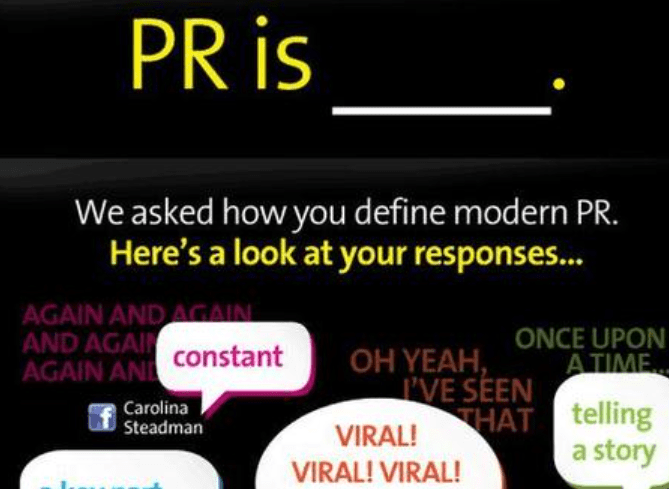
When marketing your content, you’ll need to pick a goal – is it the impact on your niche in general, or on your users?
This could be something like increasing users’ time on your site. It could even be something like seeing a spike in conversions.
However, be wary of vague goals like ‘exposing my brand’.
‘Brand’ as a concept can be a very tricky thing to nail down. Make sure to focus on evidence backed by data.
We’ve looked at public relations and content marketing separately. Now let’s have a look at how they come together.
‘At their cores, content marketing and PR are both storytelling disciplines.’
Tamara Franklin, Calysto
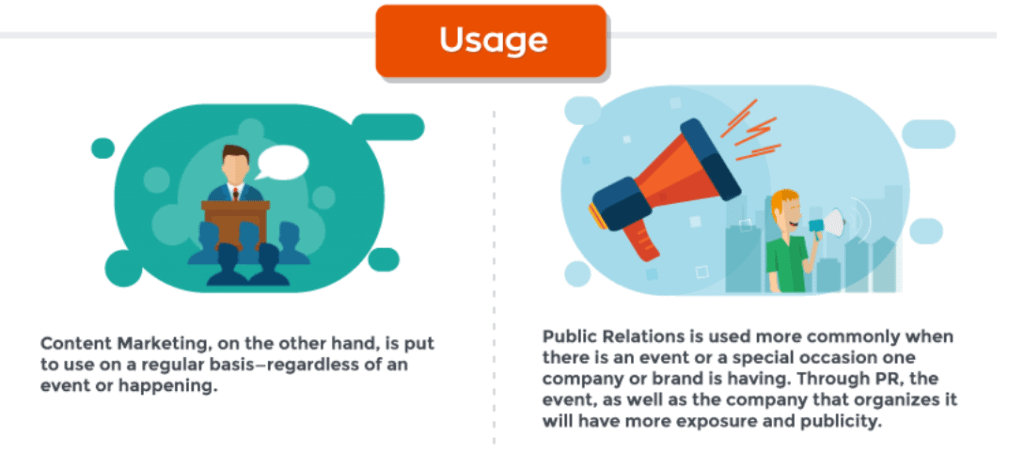
Business2Community
How Do Content And PR Work Together?
To look at how content (and content marketing) and PR work together, I want to use an analogy.
Let’s think of:
Content as a birthday cake and presents – This is the stuff about your product or service that you want everyone to see and join in with.
Public relations as a car – into which you’re loading them. Sometimes, though, this is time-consuming, and there are too many channels.
So you’ll need multiple cars (like digital and print media).
Your audience are all at a party – just waiting for it to arrive.
In this analogy, you’ve got something you want to give to people (cake). You’ve got a way of doing it (car) and a target audience or ‘destination’ in mind (party).
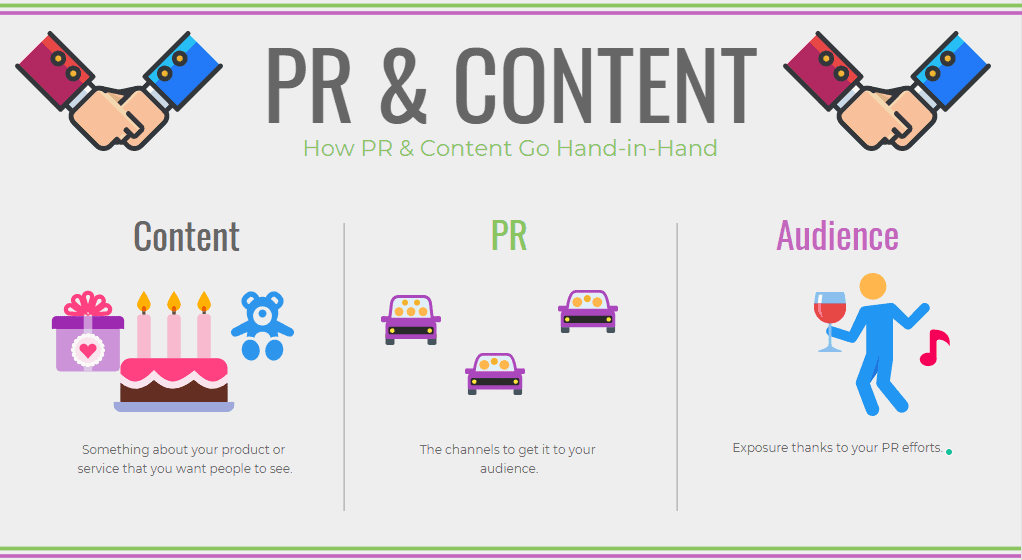
And this is the way that content and PR can work hand-in-hand.
It’s all about storytelling, and with good content focused on your brand, that story becomes a lot easier to tell.
So if you can do all of that, how do you go about measuring its impact?
How To Pitch And Measure Good PR
There are a few steps that you need to go through when creating or pitching content to see positive results:
Below, we’ve outlined them step-by-step so that we can work through them together.
Step 1 – Set Up Analytics
Say that you’ve got a new piece of video content that shows off your product and you want to share it with the world.
You post it on your site, and you want to see what the benefit has been and who’s engaging with your brand.
To measure something like this, you may want to set up tracking on an analytic tool like Mixpanel.
The big difference between Mixpanel and Google analytics is that Mixpanel is event-centric.
This means that it tracks actions rather than just page visits. These actions could be something like:
- Clicking a CTA button
- Playing a video
- Downloading a PDF
Knowing this can give you a lot more actionable data than merely a user’s onsite time.

You could also place the Facebook Pixel code on your Facebook page. This will help target and track conversions.
It also helps remarket your ads and content to users that have already completed actions.
Step 2 – Choose A Platform
The next step is to think about where’s best to pitch your content. Think about things like:
- Where do your customers go? Is it Google hangouts or Reddit? If you understand this, then you can find people like them!
- What does well? Do your customers prefer essays or tutorial videos?
Remember, it’s the distribution that’s the hardest. You need to zero in on what does well on the right platforms.
For example, the fragrance company Scentbird does fantastic on Instagram through influencer marketing.
That same model is unlikely to work as well for a company like Orby that makes pick-packer robots!

Certain content works better on certain platforms or in certain mediums.
For example, creating a company blog (a piece of owned media) is fairly easy.
However, corporate blogs can carry some stigma. Namely, that people might question how objective your writing is.
Whereas getting a placement in, say, The New York Times (a huge deal!) is a lot harder to come by (hence why they call it earned media).
But, people tend to believe the news and view it as authoritative.
You could even ask questions to your audience or stakeholders. Then you can figure out how to deliver relevant info at the right time.
This is a great approach to ‘2 way PR’. You want to increase leads, sales, and brand visibility. But you also want to be seen as listening to your audience and welcoming feedback.

You could even do this through customer case studies or testimonials. Plus, if they write something good about you, that’s just more good PR!
You want the effects of your pitching and content to spark a longer conversation. This can be either with or around your brand.
Step 3 – Brainstorm
One of the most frequent reasons that content doesn’t get ranked well is that it’s derivative or doesn’t stand out.
The same goes for news and social media.
You created a company because you believed you had a story to tell and a niche to fill. So why copy something that’s been done before?
To come up with content that makes an impact – start by brainstorming. Let’s take an example from Craig Canon from his time at The Onion.
There, writers would come up with their own batch of weekly headlines to pitch.
They’d all hand them into the editor, who would remove the names of whoever came up with them.
By doing so, they removed any biases. The writers would then reconvene and vote on their favourite headlines.
By doing this, they also sifted through the first few ideas from everyone that tended to be the same.
What we got was the sort of engaging, unique content that paved a niche for publications like The Betoota Advocate.
Just think how funny, engaging, and on-brand headlines like:
‘CIA Realises It’s Been Using Black Highlighters All These Years’
have been for The Onion.
They brainstormed ideas and found a niche with a good product-market fit. Then, they promoted it through their own channels.
Which brings us on to step 4.
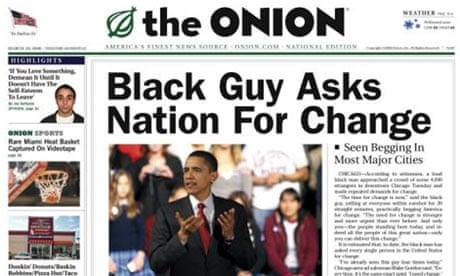
Step 4 – Make Something Good
Remember the saying that ‘no news is bad news’? Well, we tend to disagree.
Flooding your site with regular (sub-par) content or evidence of any old media appearance can work. In theory.
But it’s not the best or even easiest way to move forward.
You need to be prepared to edit down and maybe even kill weak content or pitch ideas.
It’s ok if you dedicate some real time to writing a great blog post for your niche. It could be one hour a week or even a whole day.
Either way, it’s going to be better than writing some garbage in 10 minutes for the sake of it. Then, you’ll have something worthwhile to pitch.

Plus, if you can dedicate good people to your good content, it’s even better.
Remember when we said you created a company to tell a story? Why not get the people who know that story to produce it – like your founder or lead developer?
Think about what the value of your content or PR pitch is.
Measuring Your Success
We said earlier that the concept of ‘brand’ and ‘awareness’ are notoriously tricky to pin down.
Luckily for you, measuring the results of your PR and content efforts on growth can be very tangible.
Success Metrics
Success for PR might look something like media placements.
The measure of success with media placements also depends on the authority of the source.
For example, say you’re a tech startup that gets mentioned on Techcrunch. That’s going to be a more successful positioning than appearing in The Daily Mail just because it’s print media.
With digital media, your metrics for success might also be something like ‘leads generated’.
Unlike print and broadcast media, you can track these from digital news.
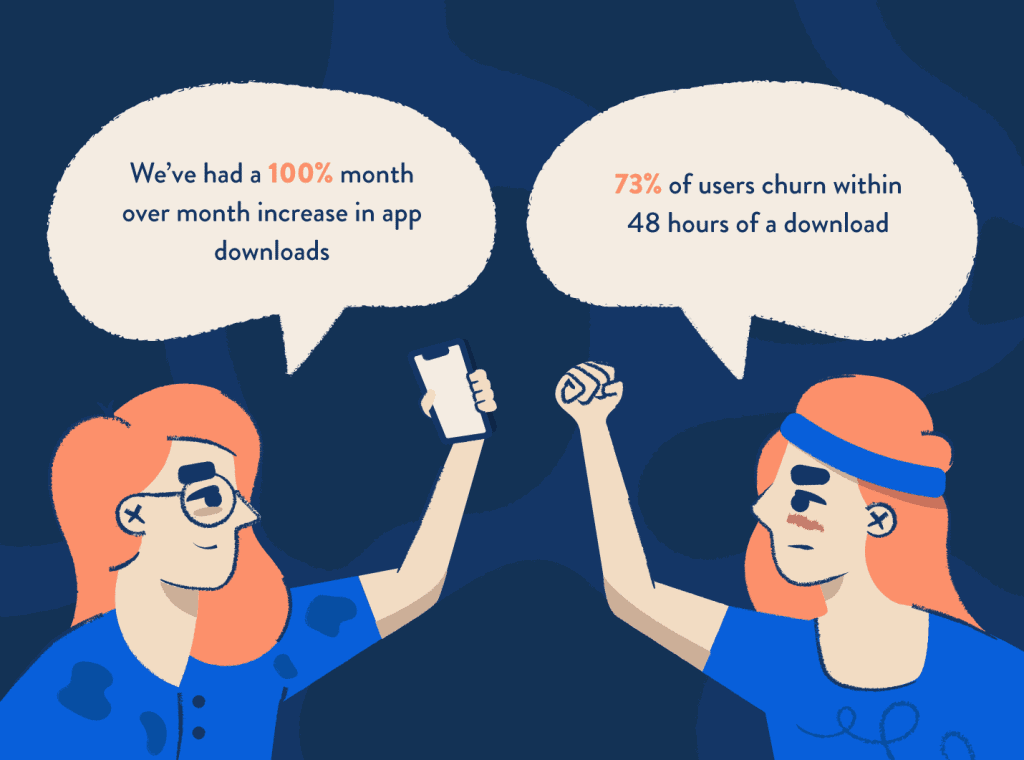
But PR can often rely on vanity metrics. These mean results that look good but don’t offer much evidence of actual growth.
Don’t get us wrong; they’re still very important numbers to look at. Although, throughout this guide, we like to advocate for a more integrated approach.
Other Metrics
PR deals with reach, impressions, and mentions. Whereas content deals with ensuring profitable customer actions.
Let’s have a look at a breakdown of how one merges into the other, step-by-step:
- Exposure stage – Traffic and impressions on your content.
- Action stage – Where content racks up views or is even clicked on from a SERP.
- Trust stage – Where users might follow your company’s socials. Or they might like, share, subscriber, or tag.
- Buy stage – Where leads are generated. This might be measured by traffic to your product sales pages. You can even look at measuring it by people who consumed content versus those who didn’t.
The point of PR is to amplify whatever content and news that you do have.
This will both increase exposure at step one and urge people on through the steps.
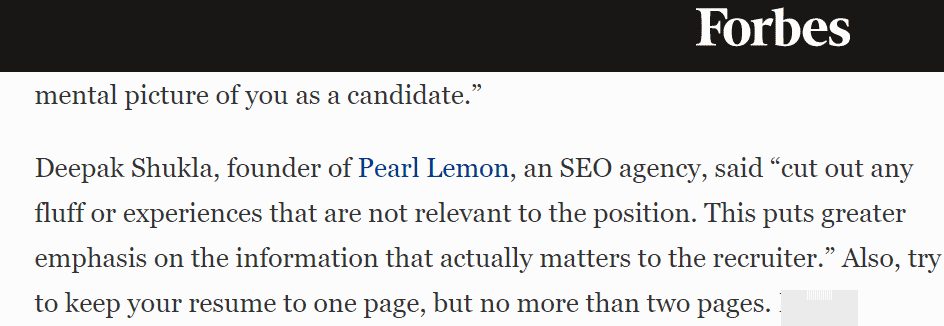
Your Competition
When you’re putting your brand out into the world, you need to think about your competition.
Usually, this involves demonstrating your unique selling point (USP).
When we talk about putting content out (especially online), we mean that you need to think about the competition. Not just your competitors!
This means literally, the WHOLE of the internet! This includes everything from memes of Elon Musk smoking weed to videos of dancing cats.
So imagine how much more valuable and engaging everything about your brand needs to be. After all, who can compete with memes?

Promotion
Ok, so let’s imagine you’ve come up with that awesome promo video, or you’ve featured on a podcast.
Now you need to be proactive – don’t be lazy! You might have the best piece of content in the world or be quoted as the number 1 source for your niche.
If nobody sees it, though, it’ll be like it never happened.
Remember back in content marketing, that we said to share it up on your socials?

Also, don’t forget that not everything works everywhere. Your fragrance influencer isn’t going to gain any traction on a tech forum!
But you do want to make your content discoverable. Maximise your wins every time a customer writes a testimonial. Or every time someone features your byline in an article.
So, think that you’ve got an announcement or piece of content that’s ready to push out into the world of PR?
Let’s have a look at how to prep your PR campaign.

DIY PR Prep
You might be holding on to that awesome article that you’ve written because you’re worried it won’t make an impact.
Or you might simply have no idea how to gain traction in your niche.
You’ll want to start by:
- Checking the news in your niche.
- Talking to specific reporters who cover your niche.
- Talking to your users – where do they hang out? What publications do they read?
- Building a PR calendar with your milestones.
If you’re at a stage where you have a good product-market fit and want to get your brand out to the world, you’ll need a plan.
Define who your audience is and what your goals are from a PR campaign.
You might want to try and break your brand message down into certain pitches.
One-Sentence Pitch
You could start with a concise one-sentence pitch that includes:
- What your product or service is.
- Who it’s for.
- Something memorable.
- Some mystery.
Your one-sentence pitch needs to be jargon-free but enticing to potential users. Let’s have a look at an example from Orby:
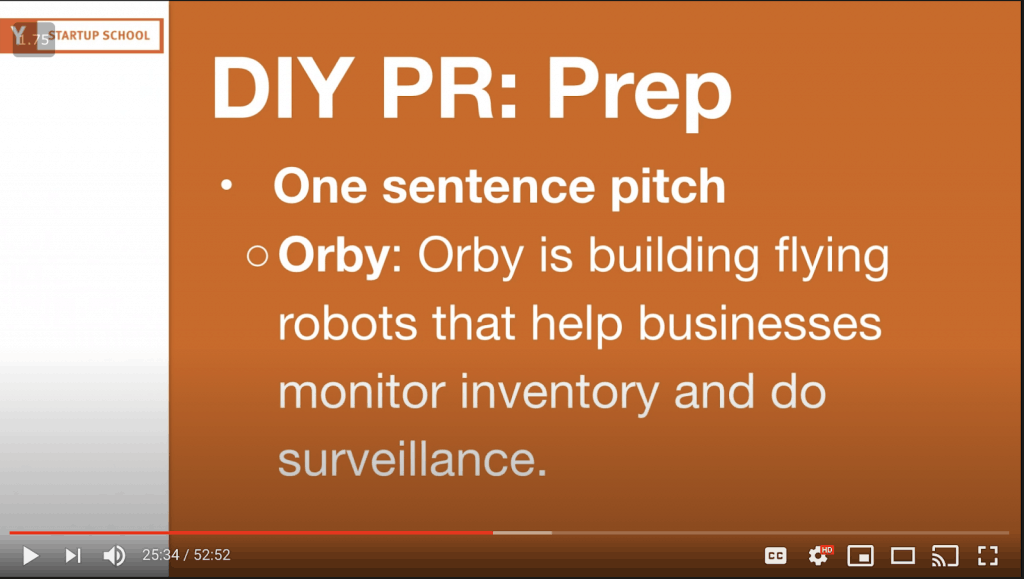
Or, let’s have a look at one from The Box Company:
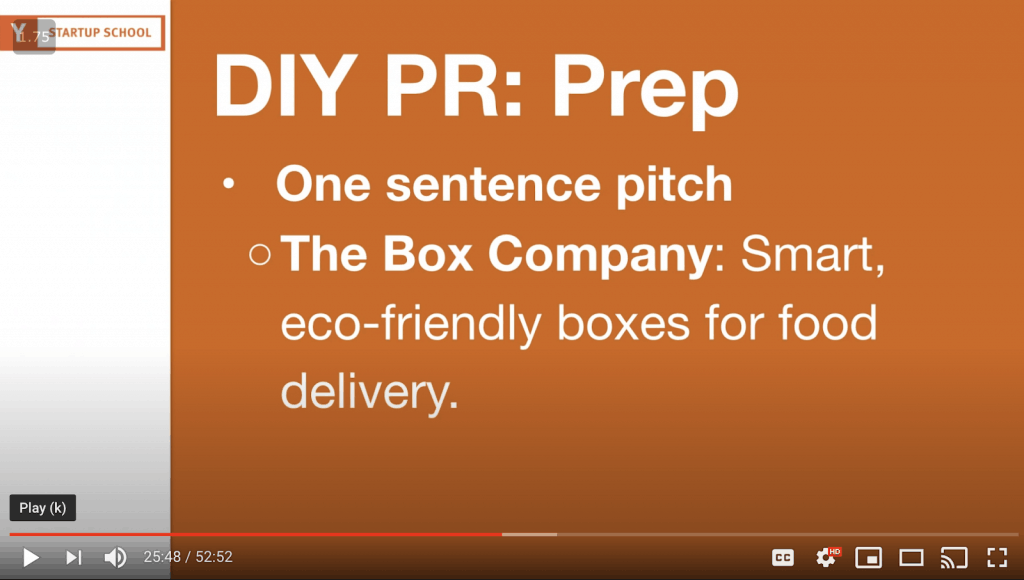
So for the first example (Orby), the
What? Is ‘flying robots.’
Who? Is ‘for businesses.’
Why? Is to ‘monitor inventory.’
Mystery? Is ‘and do surveillance.’
I don’t know about you, but I’d be interested to know what surveillance a pick-packer robot needs to do. It certainly plays into the ‘James Bond’ aspect of the product!
You want your one-sentence pitch to be memorable but easily repeatable by users!
When you’ve nailed that, you can think about expanding your pitch to 3-5 sentences.
3-5 Sentence Pitch
With a 3-5 sentence pitch, you can start to expand upon what your company does.
You can better answer who’s the customer and why your product or service is better than competitors’.
Let’s have a look at how those one-sentence pitches have evolved. First, from Orby:
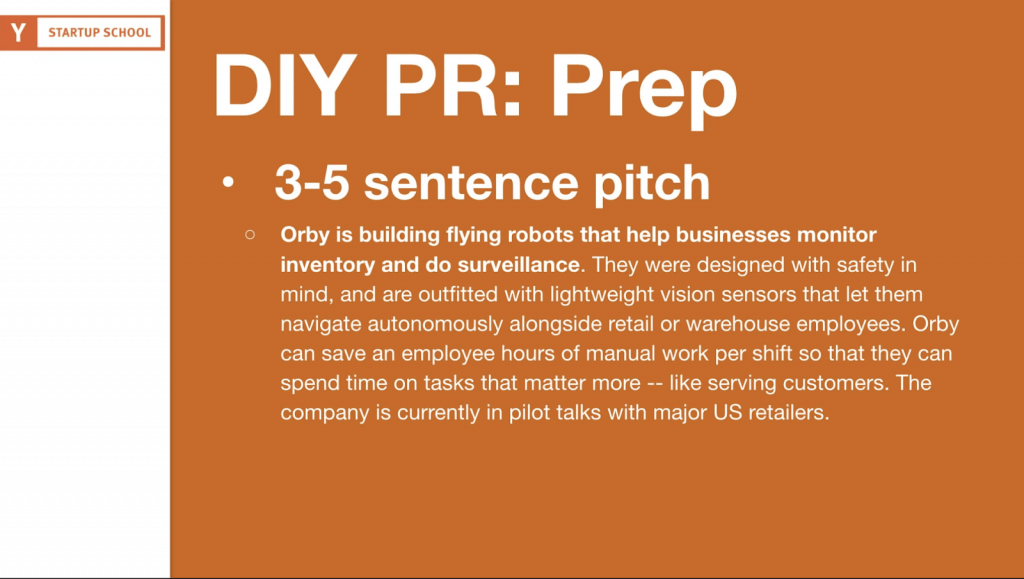
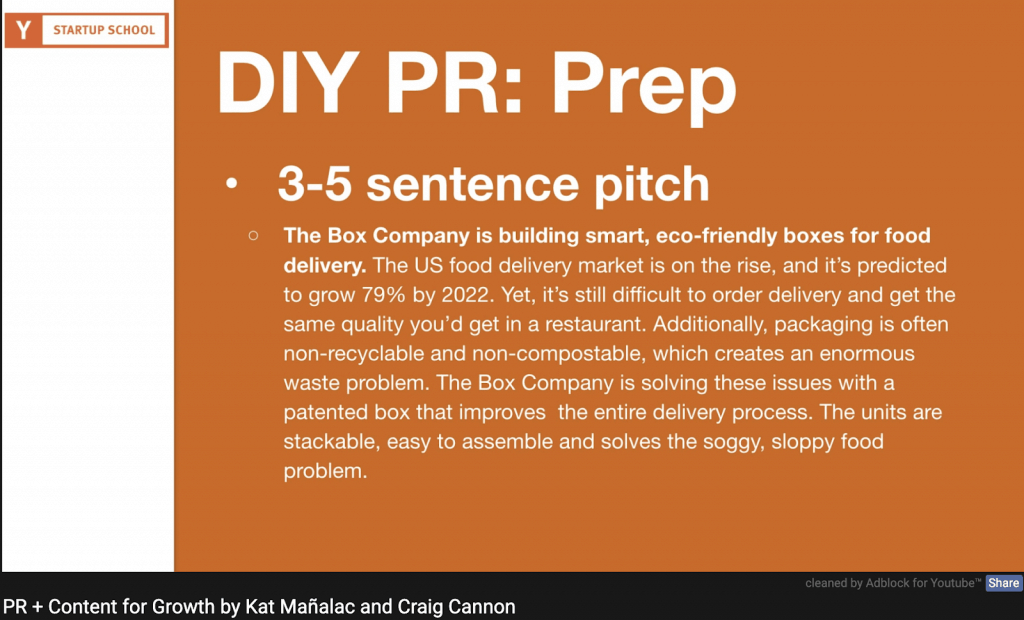
Let’s have a look at the example from Orby.
So the one-sentence pitch still opens it up. Then, we learn a bit more about how they work.
We know that it’s useful for saving employees hours of work. And, there’s still some mystery surrounding their ‘talks with major US retailers’.
Now, how do you go about getting your awesome, polished pitch out into the world?
How To Pitch?
So now you’ve made your cake (just like we talked about) and you want to know how to get it to the party.
Or maybe you’ve completely forgotten our analogy. 😭
Ideally, you’ve got your content or your news or quote that you want to pitch. But you’re looking for the right way to do it – well, here’s how.

Keeping It Personal
Pick your moment
You need to decide whether this is the right time for reaching out.
Maybe you’ve got that perfect service that people are looking for – but why now?
Is your news or launch part of a trend or a current news story? Is there some momentum that you can latch onto?
What’s your hook that’s going to interest users or reporters?
Have a think about Orby. They wanted to give brick and mortar stores a chance against competitors like Amazon.
This has become a hot topic with Jeff Bezos becoming the richest man in the world.
On the other hand, you need to make sure that you don’t conflict with major news stories.
For example, don’t reach out to Techcrunch during their Disrupt event. You simply won’t get a response.
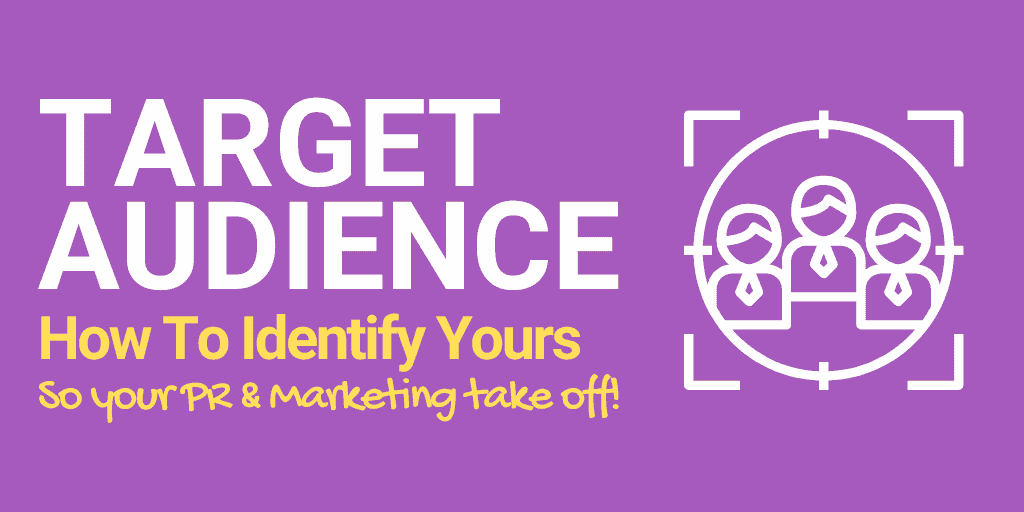
Pick Your Target
We’ve touched upon this a couple of times, but you need to have a clear target in mind.
Who is your audience, and where do they hang out? Where do they get their news from in your niche?
What are the most relevant publications in your niche? Simply reaching out to the New York Times for its prestige won’t get you anywhere.
- It might not be relevant.
- Your audience might not read it.
- Unless you’re well-known, they’ll probably ignore you.
Instead, why not think about identifying some key journalists in your niche?
You could even offer an exclusive to your first-choice publication. This is where you reach out with a potential story or exposé and offer it to a journalist.
Then, if they accept it, you don’t promote or mention the story until it’s released.

Reaching out to reporters who are active and hold sway in your niche is a great way to get publicity. It’s also an excellent way to build lasting relationships.
But you need to make sure that you aren’t just harassing them. You need to display a clear value proposition and make a warm introduction.
So what do all those terms look like in an actual pitch?
How To Write A PR Pitch
This is the make-or-break part of this whole guide.
This applies even if you have the most ground-breaking news in the world. It’s relevant even if you’re an expert in your niche with something insightful to say.
None of it will matter if journalists are skimming over your pitch.
Way back at the start of this guide, we mentioned that PR is all about telling a story.
So, how do you tell that story in the space of just one email?
How do you grab someone’s attention with a subject line alone?
Well, let’s have a look at what you want to bear in mind for your PR pitches.
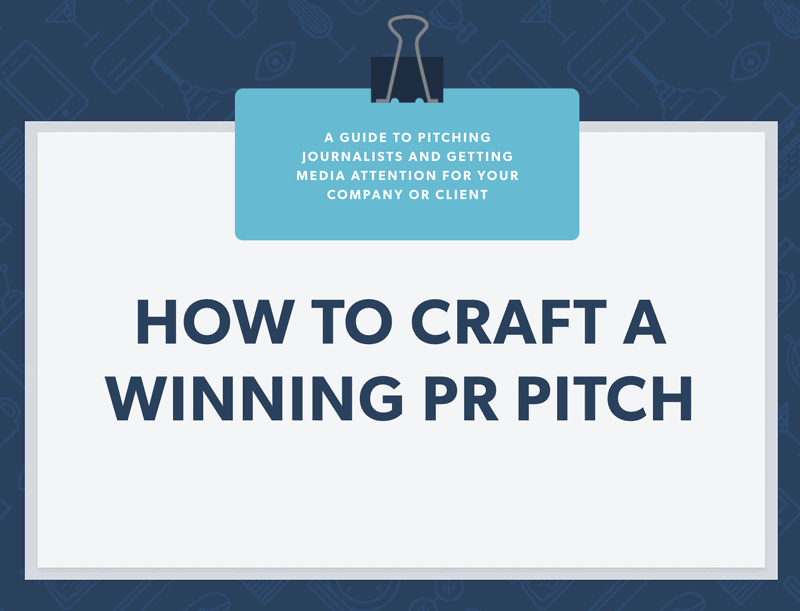
PR Pitch Structure
All over the internet, you’ll find tips on how to tighten up your email pitches.
From our experience, and from reading pretty much all of these guides, we think that a few things hold true.
One of them is the basic structure of:
- Lead
- CTA (Call-To-Action)
- Value Proposition
- Recap
Simply put, you want to make your opening play and lead the reader on. Then, you want to substantiate your story with your CTA (whatever ‘news’ you’re offering’).
In the second half of your pitch, you want to expand upon why this story is beneficial for them. Then you round-up again before signing off.
Sounds simple right?
Well, sort of. But that’s just a general outline.
Below, we’ll get into some must-haves for PR pitches. Then, we’ll look at a proper framework and a template so you can get pitching.
Pitch Must-Haves
Think about when you get an email.
What is it that actually makes you open it? Put yourself in the journalist’s shoes and work backwards.
Subject Line
Open with a captivating subject line.
There are guides dedicated to writing a good subject line. When drafting a PR pitch, you could be:
- Innovative – Think about re-phrasing your pitch to something quirky.
- Counter-intuitive – What is X’s effect on Y (instead of the other way round)?
- Controversial – Not always the smartest move, but it can pay off!
Another consideration would be to include words like ‘first’ in your subject. Give the impressions of urgency and create that curiosity.
Then, there are things to consider about the content of your pitch.
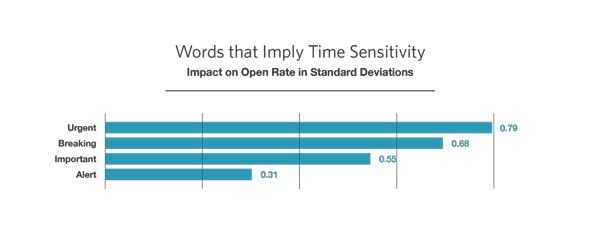
Re-Direct
Nobody wants to have their time wasted, least of all busy journalists.
Try to steer clear of flowery language and unnecessary exposition.
Use words like ‘story’ instead of ‘press release’ so that you’re speaking the reporter’s language.
You can even be specific and talk about an article of theirs that you liked. This sort of appreciation for their work can take you a long way.
However, there are even things about how your email looks that you’ll want to bear in mind.
Credibility And Clutter
You’ll find conflicting points of view about this next point on the internet. We’ll leave the decision up to you.
If it’s necessary or adds something to your pitch – do include media.
Do you need a headshot of your brand figurehead (like we tackled about back in types or PR)?
Do you need to include a boilerplate (an outline of the company and its products etc.)?
Are product photos or a press release going to make the journalist’s life easier?
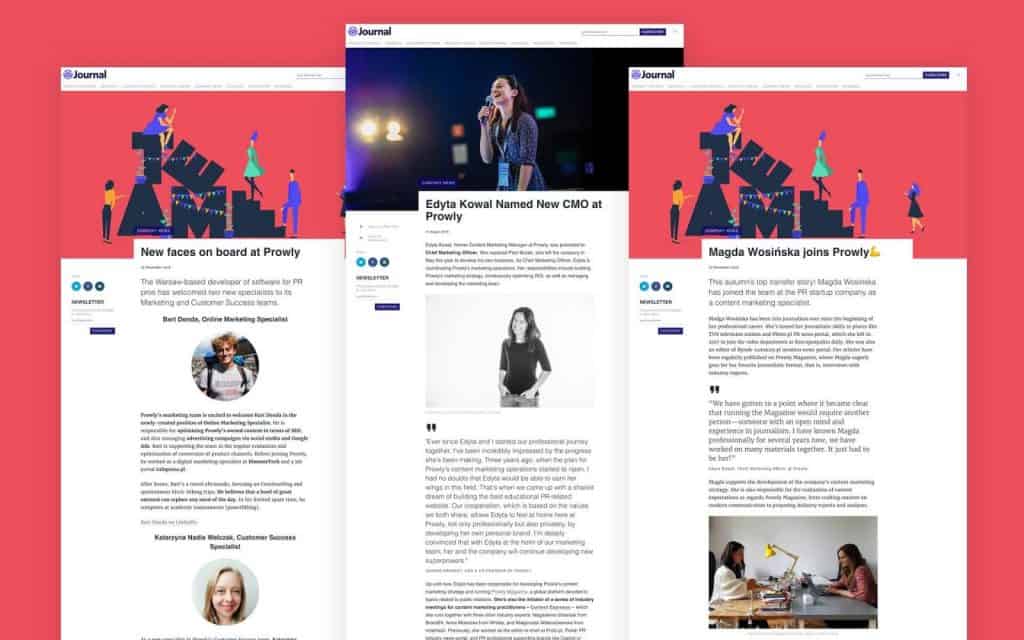
Remember to think now only about what you can offer, but what the journalist needs.
One consensus you will find, however, is don’t embed media. We agree with that.
Some guides say that journalists don’t want emails with large attachments.
Either way, they certainly don’t want the pitch email itself to be broken up with large, slow-to-load media!
Lastly, remember to highlight your credibility. Send your pitch from a company email!
It’s also a good idea to have a personalised signature that shows up at the bottom of all your emails.
So now that you know to have:
- A catchy subject line
- A direct tone
- No flowery language
- No embedded media
- A legitimate email address
How do you go about putting together a world-class PR pitch?
Writing A PR Pitch
We think that there are five main areas that you want to cover in a great PR pitch.
Plus, these five areas tie into offering value without being too promotional.
Let’s have a look at what they are.
Research And Personalisation
Chances are, you’re going to be more responsive if someone calls you by name.
If that’s true, then it’s a given that a journalist is going to be even more engaged if you reference some of their other work.
This shows that you’ve done your research on who you’re pitching to.
If you’re willing to do that, it signals that there’s a good chance that you have a well-thought-out pitch.

Also, remember to contact the right person. That might be the editor or the journalist themself. If you need to recap this, we talked about it back in our definitions of a journalist.
Also, remember to provide some personalisation about yourself!
Who are you? Show some signs of your social proof. For example, that company signature that we mentioned in the previous section.
Timelessness And Timeliness
Another way to think about this point would be – offer something unique.
We like the phrase ‘timelessness with timeliness’. It suggests that a pitch is part of a current, hot news cycle but that it also has scope beyond that.
Intrigue whoever you’re pitching to and offer them something that they don’t have.
Concision
These next two points tie together closely. We don’t just mean being concise in the language that you use but across your whole pitch.
Ideally, we think keeping pitches to 2-3 paragraphs is a good space to aim for. Make sure to craft a great subject line and a clear pitch that’s to the point.
Bear in mind that this may differ depending on what type of pitch you’re sending.
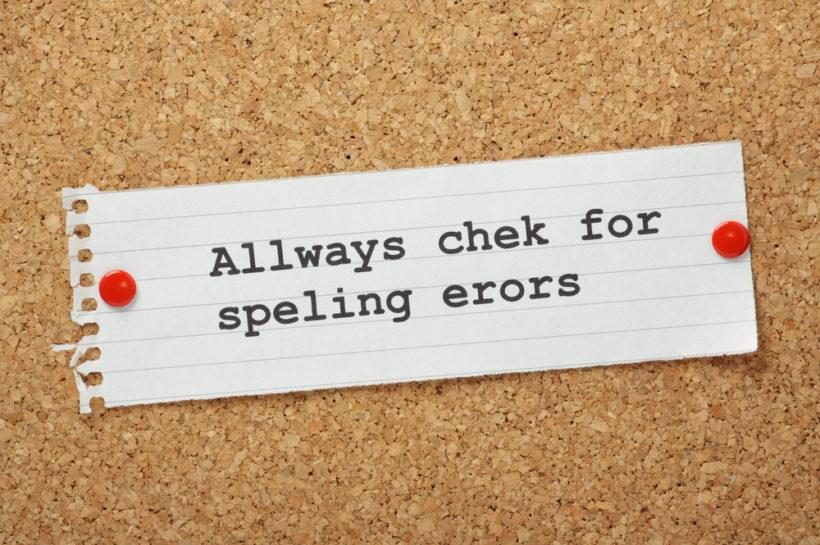
Proofread
This one should go without saying.
If (and this is a big if) your pitch has managed to stand out to a journalist who gets 100+ emails a day, you’re still not home safe.
Nothing will land your pitch in the junk folder quicker than errors!
Make sure to read your pitch thoroughly, or run it through a tool like Grammarly to check for errors.
Follow-up
We’ll explain this one in more detail in the next section as to how to follow-up. But for now, remember to actually do it!
A busy reporter might have forgotten about your email or opened it and lost it somewhere in their inbox.
Without being pushy, remember to follow-up.

Glean
Now we’ve got the theory down of how to craft a great PR pitch. So, let’s have a look at a potential email template that you can tailor to reach out to journalists with.
Pitch Template
Subject: Exciting new story at {Company}
Hey {FirstName},
I just read your recent article on {Topic}! Or {TopicInsight}.
Here at {Company} we’ve got some exciting news coming up: {NewFeature}.
Maybe you could use this to look at how {NewFeature} help {CommonProblem}?
Let me know what you think!
{YourName}
Template Breakdown
So what is it that’s so good about that template?
Obviously, you might want to tweak it to suit your pitch and brand, but we like its:
- Subject line – That creates a sense of urgency with an ‘exciting new story’.
- Personalisation – By using the journalist’s first name and referencing their work.
- Tone – ‘Here at {Company}’ makes it sound like a family, or a team.
- Directness – It’s short and to the point without excess.
- The way it looks – The line-spacing makes it easy to navigate.
- It’s correct – Without spelling or grammar errors.
- It’s suggestive – Without being overly promotional.
All in all, we think these factors make it a world-class PR pitch.
So feel free to tamper with the template to suit your needs!
Plus, if you have a solid template that you can customise you won’t have to send out generic mass pitches.
This will help you steer clear of spam filters which might view your pitches as too similar and ‘spammy’.

Email Outreach
So, although cold emailing is still an effective form of outreach, it’s even better if you can make a warm introduction. Try crafting a pitch that clearly offers something to a journalist.
Make a stack rank list of your top 3 most desirable publications and find a way to reach out to them.
And maybe forget about The New York Times – for now at least!
Then, make sure to give it time.
Rome wasn’t built in a day, and PR doesn’t get responses overnight. Get your story or news together and craft an awesome pitch using the template above.
Then, create milestones for your PR pitch and allow at least three days for a response!

What Not To Do
Ok, so now you know what to do to reverse engineer a great PR pitch. But you need to be wary of the common pitfalls too.
So whatever you do, don’t:
- Lie – About user numbers, growth, or revenue.
- Act like you’re entitled to a story – Follow up once or twice, but don’t hound people!
- Be overly promotional – Your PR pitches need to be helpful or sound like a scoop, not an ad.
- Suggest headlines or copy – Journalists do not appreciate this!
- Ask to see a draft – Even if you’re in hard sciences, for example, and used to peer review journals. People may view this as questioning their integrity.
- Send out mass pitches – We see way too many emails with {CompanyName} not even filled in when pitching for PR!
Of course, if the journalist you’ve reached out to needs to fact-check anything, have a look at a draft.
Remember as well to talk like a human. You’re trying to be personable and build a business relationship with this person, so try not to talk like a robot!
A couple of things that we want to remind you not to do also lead into our next point about following up.

When following up, don’t do so immediately. And whatever you do, don’t call a journalist. There’s no quicker way to scrap not only your story but your relationship.
Journalists are particularly time-poor. So make your pitch worth their while, and don’t hassle them.
But do remember to follow up.
Follow-Up
If your story or feature does get picked up – either the first time or after a follow-up email – make sure to promote it!
73% of journalists say that they are ok with receiving follow-ups. Even for pitches that they didn’t initially respond to!
So, if your pitch gets picked up – mention it on your socials and across your relevant channels.
Think about drafting tweets containing a link to the story. This makes it easy for friends and family to post, and it’s hard to say no to.
Remember that we said even if the story doesn’t get picked up, you can put it through your own content process?
Tidy it up into a killer piece of content yourselves and post it on your channels!
Either way, you might also want to draft answers to some FAQs about your company.

By doing this, you can cut down on response time when a journalist gets back to you. Remember, sending your PR pitch is just the first step in a fruitful relationship.
Think about things like:
- Who are your customers now?
- Who will they be?
- How many employees do you have?
It’s all about making the process easier on you and the journalist! You want to be as positive and helpful as possible to meet their further requirements.
After all, you’re both trying to help each other!
By this point in the guide, though, we’ve been talking a lot about journalists. You might be wondering, however, how do you identify and get in touch with the right people in your niche?

They’re not unicorns, so they must be somewhere.
Well, you could do the legwork of coming up with a list of your favourite publications and writers. Then you could seek them out manually.
But we think that there’s a better (and easier way).
That’s why we’re going to go through some of our favourite software for pitching and outreach.
Let’s check out our list below.
Software For PR And Pitching

1) Traackr
If you’re looking at making PR pitches, you’re going to be reaching out to bloggers and journalists at some stage.
We’re going to level with you – this can take time (and a toll on your sanity)!
That being said, you’ll want to make the most of every pitch email you send and every relationship you build.
That’s where Traackr excels. Traackr offers data-driven results for influencers that are right for you.
You can start by discovering and vetting influencers in your niche.
Plus, they have a bunch of tests for things like brand safety. With these, you can ensure that you reach out to bloggers with content that is ‘on-message’ for your brand.
This also means that you can customise tolerance levels and topics to steer clear of. This is pretty important stuff for building quality connections!

2) Followerwonk
Nowadays, a lot of journalists ‘live’ on Twitter.
What Followerwonk does is graphically represent the most active times for your followers.
With this, it’s easier to make educated business decisions about where to pitch content at a glance.
Followerwonk works primarily on Twitter and with it, you can:
- Search Twitter bios to connect with influencers in your space
- Compare Twitter accounts to see overlaps and influencers
- Analyse your followers by location, bio and who they follow
- Track new and lost followers on your Twitter and competitors accounts
Twitter is not just one of the most important platforms for influencers and bloggers. It’s also one of the main places that content is shared.
So, start understanding how to leverage Twitter to pitch to the right people.
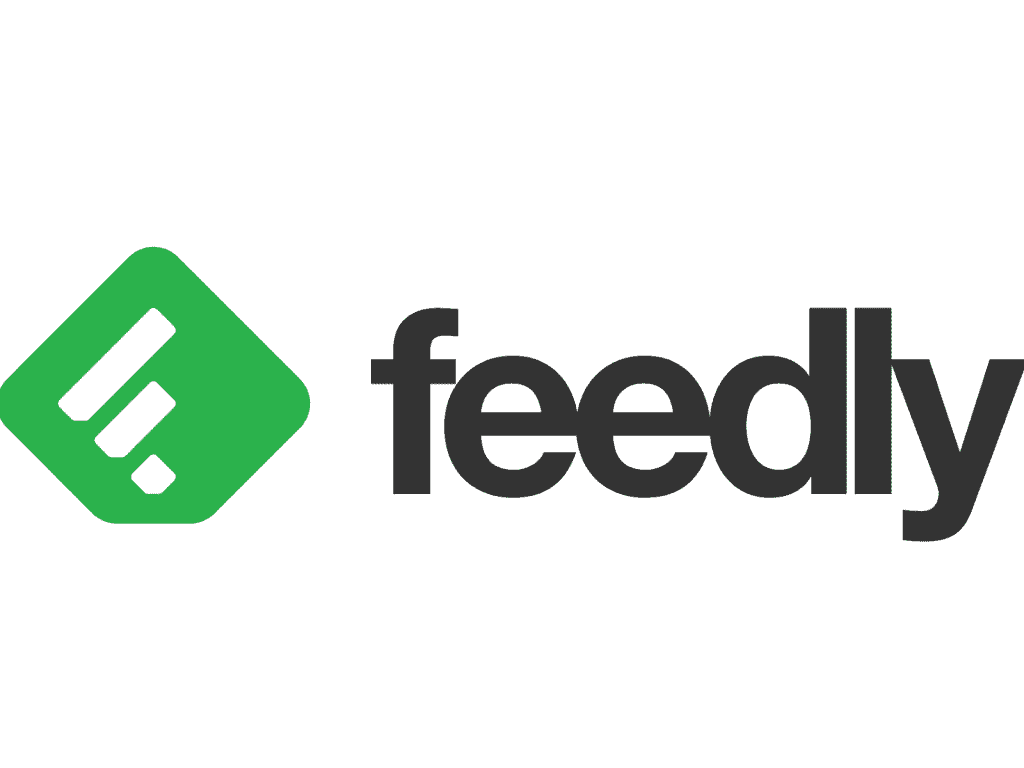
3) Feedly
Feedly may well be the only tool in this list that I would describe as ‘cute’.
Let me explain. Feedly is a tool that gives you the assistance of Leo – your very own friendly AI research assistant.
Leo takes your news feed and declutters it. He’ll do the legwork of sorting through the hundreds (or more) articles you’re interested in.
Leo then prioritises the most insightful ones. This is all done by the keyword, trend, and topic preferences that you’ve selected.
He’ll even tell you why he’s recommended the articles at the top of your feed.
With Feedly, you can find and organise relevant news and sources. You can also filter out the general noise of too much information.
With this, you can keep on top of the current news cycle in your niche. You can then get a better understanding of where you fit into that, and what value you can offer a journalist.

4) PRophet
It’s a good sign when a company has ‘PR’ and ‘pro’ in the name.
PRophet is fairly new and could be revolutionary. Essentially, it’s an AI-driven software that predicts media interest and story spread. All before it’s even pitched. Or so it says.
The ultimate goal is to perfect and refine earned media strategies before pitching. The team at PRophet claim to have nailed this process down. They do so by forecasting insights based on data and reporter behaviour.
Sort of like weighing up the commercial potential for a book before it’s published.
This data is based on 2million+ stories from 12,000 reporters to create a ‘probability rate’. This means how likely it is that a reporter would cover a story.
It could offer PR departments actionable data to bring back to CEOs. At the end of the day, though, it’s based on trends that a thorough PR professional should be looking for anyway.
Either way, we’re keen to see what PRophet can do for the world of PR.

So now that you know how to pitch and who to, what does a PR strategy look like?
Below we want to look at a couple of case studies of good and bad PR. These will go a bit beyond the scope of simply pitching to journalists.
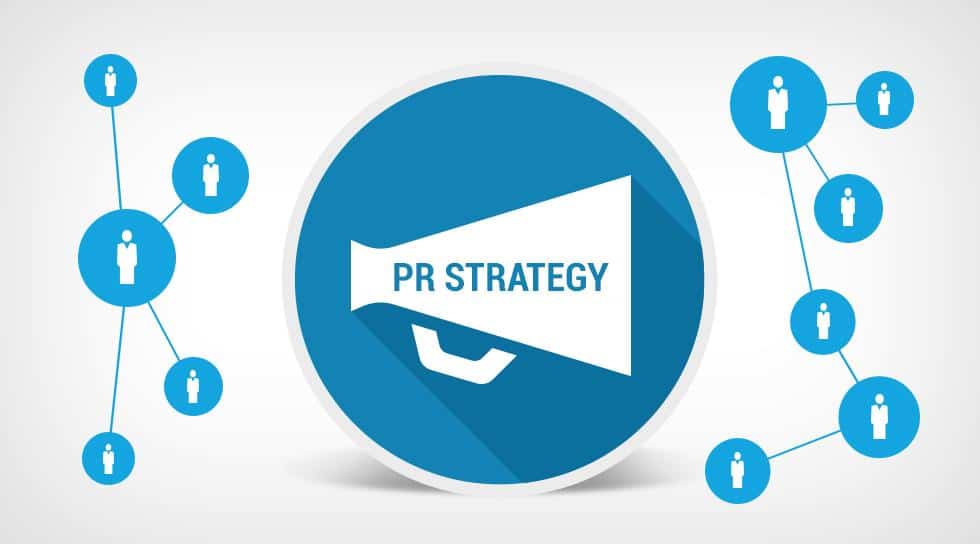
This will delve a bit deeper into the idea of content that we’ve been talking about.
It should also act as a nice round-up to how to deal with all forms of public relations, and what PR can look like at its best.
Let’s get into it!
What Is A Good PR Strategy?
We’ve spoken a lot in this about the importance of telling a story. Of having something timely but unique that reacts to a current market trend.
Or, something that listens to and responds to users’ grievances – what we called ‘2-way PR’ earlier.
Ok, so we don’t know about the pitching process that might have gone into this. But let’s have a look at the content and PR aspects of Airbnb’s logo change.![]()
This all focused around their new logo design, the ‘Bélo‘, which people likened to some pretty ‘below the belt’ stuff.
Among these complaints and accusations of plagiarising other logos, Airbnb responded in style.
They made the above video explaining their decision. Then, they even created an ‘experience’ where users could create their own logo.
On top of that, their CEO also hosted a webinar explaining the change.
What we want to highlight in this is how they adhered to some of the points we’ve been talking about:
- Crisis management – Early on in this guide, we mentioned that it isn’t always going to be positive PR that you’re dealing with.
- Personalisation – Offering users the opportunity to create their own logos.
- Reacting to the current news cycle – And not waiting for further speculation. They also used the traction it had to ‘ride the wave’!
- 2-Way PR – By listening to customers and keeping in touch with them.
Plus, it’s a great integrated example of how PR and content go hand-in-hand to craft a successful strategy.
Which begs the question, what does the other side of the coin look like?
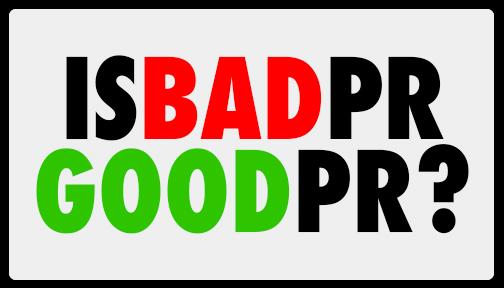
What Is A Bad PR Strategy?
For this case study, we’ll also be looking at something reactive – namely Pepsi’s 2017 advert featuring Kendall Jenner.
Now, hazarding a guess that you haven’t been living under a rock, you already know what we’re referring to.
In the ad (below), we see Jenner walking through a protest that mirrors the Black Lives Matter protests.
In the end, she breaks the picket line to walk up to an officer and hand him a cool, refreshing can of Pepsi. Thus, trivialising and ending racism. Yeesh. 😒
The whole campaign was misguided from the start. What’s interesting, though, is Pepsi’s response, and where they failed to follow the rules that we’ve been talking about.
What Pepsi did do ‘right’ in the wake of the backlash was:
- Respond quickly – We’ve said time and time again in this guide that it’s about picking your moment. That applies to crisis management too, it seems!
- Made no excuses – They apologised without accrediting blame.
- Took action – To pull the ad.
And guess what, we’re all still drinking Pepsi. Whilst the advert itself has become folklore in the PR world; it should instil in you that with PR, there is a way back!
Earlier, when we were talking about subject lines, we said that it can work to be controversial.
What Pepsi failed to do, in this instance, was have a reason for being controversial.

In the ad, they use the tag-line ‘join the conversation’. Maybe they thought they would be at the front of the conversation about racial tension.
But then there was no CTA! It was just a throwaway line, and concept, for the sake of it.
What they also failed to do was research where and what to pitch.
Remember way back when we were talking about influencers? What value did Kendall Jenner as a mega influencer offer to the message of the Pepsi ad?
Do we think that Pepsi listened to audiences following the BLM protests?
Do we think that they took the time to find out where that audience hangs out?
Do we think they considered Jenner an activist herself?
If the end product is anything to go by, we’d argue probably not.
Now, you’d be forgiven if you’re starting to think that public relationship sounds like a bit of a minefield.
You might even be questioning if it’s worth pursuing.
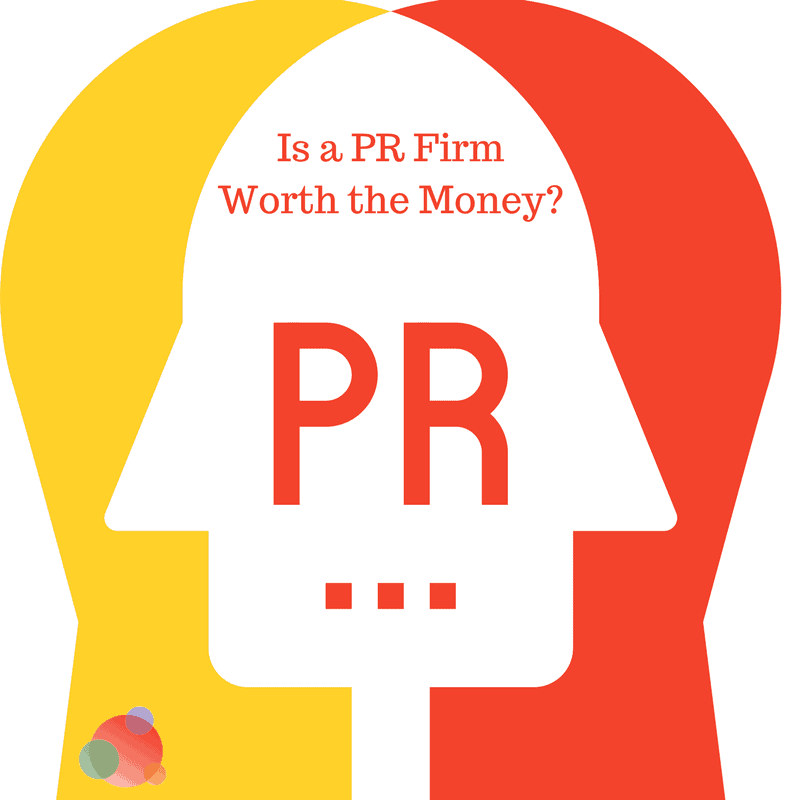
Is It Worth It?
You can look at success either on a micro or macro scale.
We suggest you revisit the section on measuring the impact of your public relations.
For each successful pitch, you want to ask yourself:
- Did it help you achieve your goal?
- Did you see an uptake: in new users or maybe inbound investors?
On a macro scale, it’s a little bit harder to pin down that mystical idea of ‘brand exposure’.
As we’ve mentioned, though, public relations no longer needs to rely on vanity metrics alone.
So, if you do choose to outsource your public relations efforts, what should you expect from a PR agency on the macro scale?
What To Expect From A PR Agency
Chances are if you’ve read this far that you’re either:
- A PR professional looking to brush up or looking for alternative insights.
- Or a business owner wondering how to improve your public relations. Or maybe even wondering whether to outsource it altogether.
If (as we suspect) it’s the latter, then you’ll want to know what to expect from either your PR department or a PR agency.

We’ve come up with a list below of things that we believe need to be delivered on to achieve success.
21st Century PR
Traditional PR still has its place, for sure.
Press releases, news conferences, product announcements – they all still matter.
But in the 21st century, a lot has changed, and the old way of doing public relations is just that, old.
With the rise in social and digital media, PR agencies need to be up to date. They need to be up to date with what journalists and publications are relevant in client niches.
They also need to be aware of all the avenues available for promoting a company’s public relations. It’s about more than just the morning papers!
Digital PR
People aren’t consuming their news from traditional sources like the TV or the local paper anymore.
In fact, 45% of people in the UK get their news from social media.
People are looking to podcasts, social networks, and even forums to stay informed.
A PR company needs to integrate an approach to digital and traditional media. Otherwise, you might be losing out on a huge percentage of the coverage you deserve.
If you’re not even investing in public relations at all then you’re missing out on 100%!
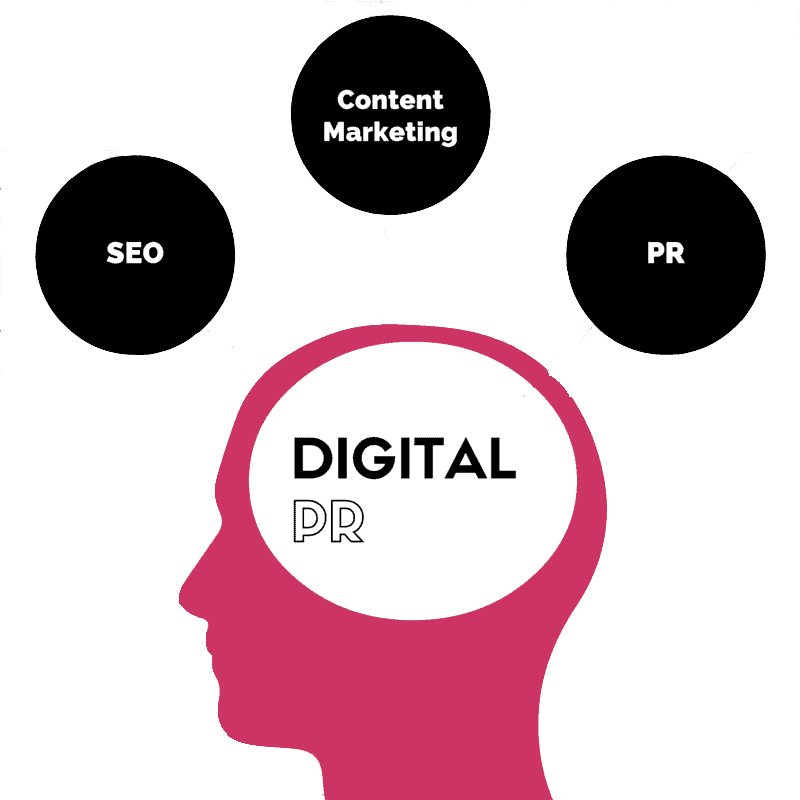
Keeping Up With The Tech
Does your PR company know what devices your target audience uses to consume their content?
Are they tailoring your content to suit those devices? Do they know where, when, and why your target audience goes seeking their news and information fix?
Do they stay ahead of the latest trends in social networking? Are they making sure your brand is seen on emerging networks before the competition?
Plus, are they ready to hit the ground running? Do they have the necessary software and tools to tailor pitches and content to relevant sources?
The World Is Awake 24/7
Effective PR has to be nimble and flexible in a never-ending news cycle. Your PR reps need to be able to keep up.
Earlier, we said that news often breaks on Twitter and blogs before traditional media.
You need a PR agency that stays on top of the news cycle on a global scale.

They Need To Leverage The Power Of Audience Relationships
The internet has given the public a voice – a loud one.
Content and news stories, along with review sites, encourage reader comments. People then share Tweet and screenshot these comments as much as the stories.
Sometimes, a comment becomes a news story in its own right.
All media has the potential to become a conversation with or about your brand.
A good PR company has to understand how to monitor that conversation. And, how to participate in it effectively.

They Need To Understand That Cancel Culture Is Real
Kendall Jenner and Pepsi are still around. But one small mistake could significantly damage your brand’s reputation.
You need a reliable PR firm that will consolidate your brand message and stay on-brand.
Remember when we talked about Traackr? A relationship-management tool that can find you influencers that align with your brand. You need to expect the same alignment from your PR agency.
Can They Demonstrate Results?
Most traditional PR companies don’t know how to measure their results, and they don’t want to learn how to either.
It’s not enough to rely on media clicks and impressions (vanity metrics) alone. In this guide, we’ve touched upon loads of other indicators of success and how to measure them.
So, if you find a PR agency that has all those qualities, it begs the very first question we asked in this guide.
Can I manage my company’s PR myself?
The answer is, potentially, yes, but let’s have a look at why you might want to think about outsourcing.

Do I Need A PR Agency?
It’s a fair question – the one that we started this guide with. And it’s the one that we think we should close on too.
Whilst this guide is a great start point (and we’re thrilled that you’ve read this far!) it might not turn you into a professional overnight. 😭
What it might do is inform you of the channels to look at when it comes to pitching PR, and how to do it.
But being new to anything involves a steep learning curve. Getting over this curve is going to ‘cost’ you in certain areas.
Time
The most valuable thing that outsourcing, in general, can offer you is time.
The time no longer spent on crafting, sending, and following up on pitches. Or brokering and maintaining relationships.
With these time-consuming tasks off your hands, you can focus on building your company. In turn, you can ensure that you have those news-worthy stories to pitch.
Software
We spoke earlier about useful software for finding and building relationships.
Some software that might improve your pitches a little (like Grammarly) is free. But the rest will involve an upfront cost.

Relationships
Which brings us to another important point. Who do you know?
You might shell out for these software, or make a new-hire to create a PR department.
You’ll still have to ask the question – what are your existing relationships like with media outlets?
A PR agency can bring a database of journalists and influencers from multiple spaces. And not only the ones that they know but the ones that know them.
A good measure of a PR agency is whether they’re created lasting relationships. Are they at a stage whereby reporters reach out to them for pitches?
Plus, PR professionals will know how to approach journalists.
Optimising Your PR
Something that the ‘scatter-gun’ strategy of traditional PR never considered was optimisation.
Imagine if you could outsource your PR to an agency coupled with an award-winning SEO agency? An integrated agency that understood the worlds of PR and SEO.
With that knowledge-base, your PR pitches could excel. It’d no longer be a case of throwing out mass pitches and seeing what sticks.

With a good understanding of SEO, a PR agency can even optimise your press releases.
They’ll know their way around how to insert relevant keywords and organic backlinks to make them do the most work for you.
Conclusion
Ultimately, public relations is all about telling a story.
As we mentioned earlier, one of the best ways to build that story is to look at your content and content marketing.
With this aspect of your public relations nailed down, you won’t have to wait for an audience to come to you.
You also don’t have to rely on news-related events that might only happen to a company three times a year!
An investment in PR can boost your social proof, authority, and user interaction. All this can lead to more users taking desired actions and a better ROI.

Plus, PR is a constant process that grows and becomes much more than a ‘quick win’.
Public relations is all about getting attention and then managing it. And if you want to stand out in the noise, you need to offer something unique.
At Pearl Lemon, you can expect a thriving relationship with an agency that’s well-versed in both PR and SEO.
If this guide has inspired you to start investing in your PR, jump on a call with us! We can discuss the future of your public relations!
And, once again, thanks for reading this guide!

FAQs
Should I Post Content On A Personal Or Company Blog?
There’s a couple of different answers to the question ‘where do I promote’ my publicity and content?
Ideally, for SEO purposes, you want to post content on your site. But it depends on what you’re talking about.
We tend to connect with humans (hence the importance of having a figurehead for your PR). Something business-oriented (like an article) can work well on your company site. Especially if it’s authored by, say, the founder.
This also begs the question, though.
How Often Should Founders Publish Content?
The short answer is – before you have a product-market fit, never! Otherwise, you’ll just be funnelling traffic towards something that won’t, or can’t, convert.
During that product-market fit stage, especially for an early startup – try to produce something good every month.
Remember to ask yourself – what value does this piece have?
How Do I Incorporate Vision Into My Pitch Vs. Where I’m At?
This is a common question and a good one. Where is your company right now versus where do you see it going?
Remember when we looked at 3-5 sentence pitches, especially Orby’s?
They mentioned that they’re in ‘talks with major US retailers’. It’s ok to speculate a little based on where your growth model is headed.
But remember that we also said – don’t lie about users, or revenue, etc.
What’s Better – Clickbait Or Authenticity?
If one of the major keys to PR is content, then you might find yourself asking this question.
Clickbait and ‘lightweight media’ like memes are definitely great for enticing people.
They rarely encourage users to engage with your brand, however, as they’re disposable.
Have you taken our advice to define your audience and find out where they hang out and what they read? Then you shouldn’t need clickbait.
With that information, you should be able to craft titles that interest your audience.
What Are Some Useful PR Channels?
We mentioned earlier that certain types of media work better on certain platforms. This will also depend on where your audience reads and hangs out.
There are lots of platforms to contact journalists on like HARO (Help A Reporter Out). A good PR agency will always utilise these. Platforms like Twitter are also great for sharing updates with your following.
How do you come up with a PR strategy?
Here are 6 steps to use PR for a growth strategy.
- Add a timeline
- Create Goals
- Identify the Audience
- Identify the Competition
- Set tactics
- Measure results
What is a PR strategy?
A PR strategy helps a business plan out their public relations to produce the best outcome.
Why do we need a PR strategy?
Having a plan for PR can guide what you need to do and produce better results.


